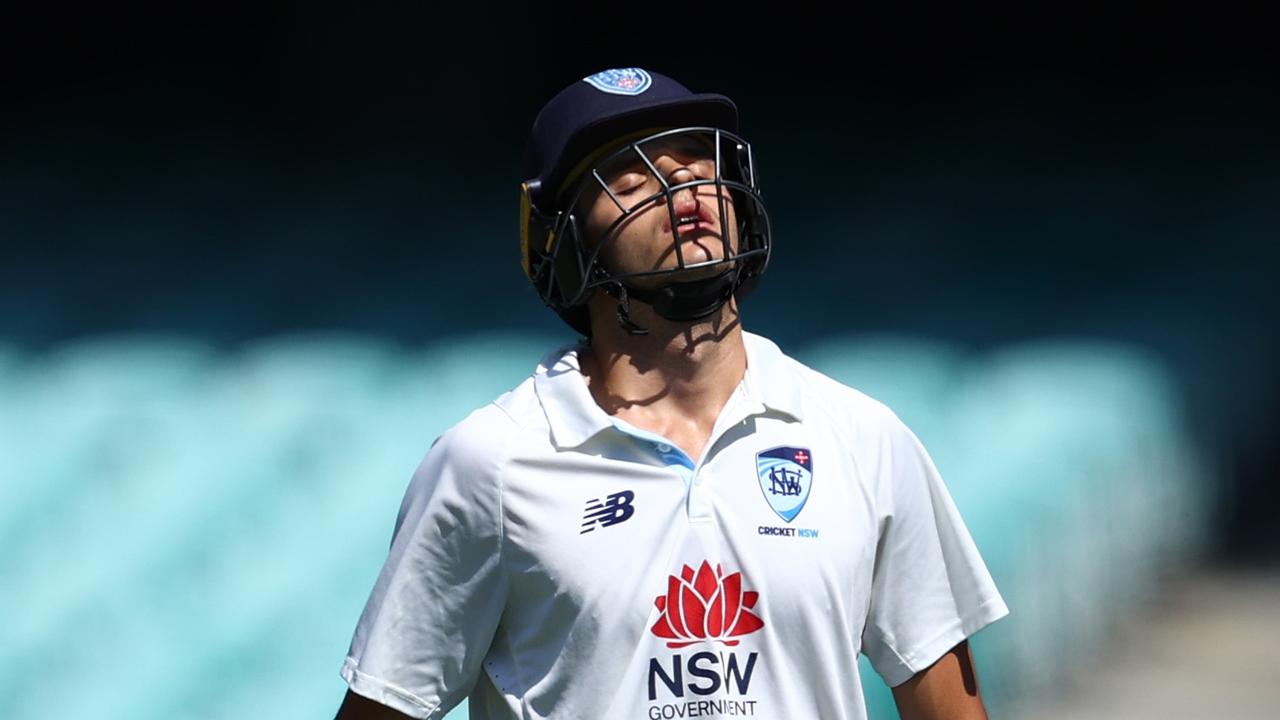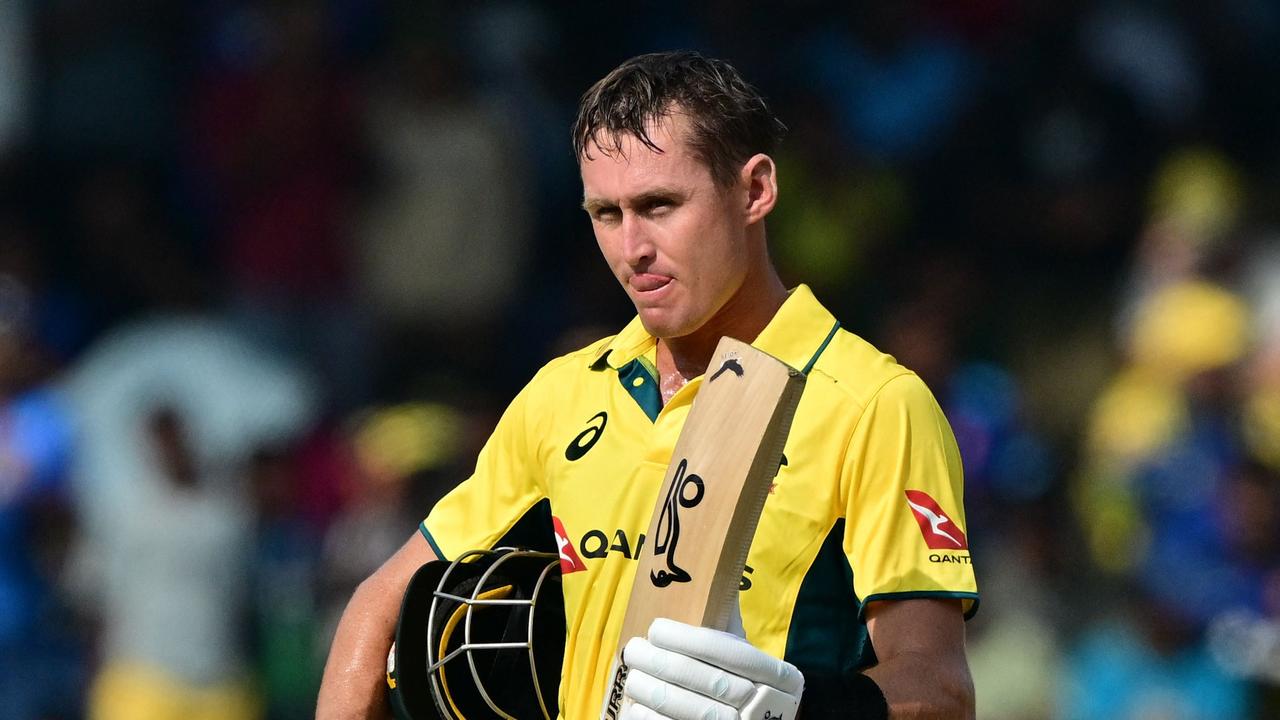Fab Feb: When the world’s best cricketers headed to country Victoria
Forty years ago, Sri Lanka, Pakistan and the West Indies headed bush to play Victorian country teams in a month of cricket that left players and spectators with memories they’ll never forget, writes PAUL AMY.
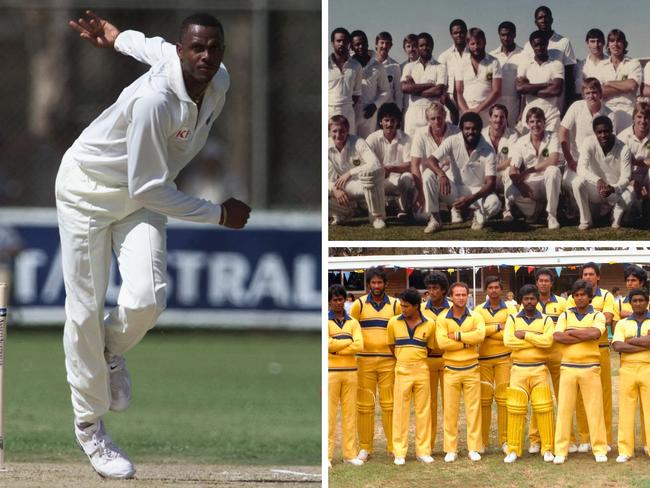
Cricket
Don't miss out on the headlines from Cricket. Followed categories will be added to My News.
Former Victorian opening batsman Bob Baldry did not take a wicket at first-class level, nor in District cricket.
But he’s pleased to say he once dismissed an international captain.
His victim was Sri Lanka’s Duleep Mendis.
Baldry got his man 40 years ago this month, when he captained a Gippsland team against the tourists at Morwell.
“He holed out in the goalsquare,’’ Baldry, 74, recalls. “It might have been the last over of the day. They’d well and truly passed us. So I’ve got that in my history books, getting out an international captain!’’
The Sri Lankans won comfortably, dismissing the Gippy XI for 100, easing past the small target and batting on to 7-238 off 50 overs, giving the appreciative locals some afternoon entertainment.
A young Arjuna Ranatunga top scored for the visitors with 89 from No. 4. Baldry cannot recall Ranatunga’s innings, saying his side’s poor performance had erased much of the match from his memory.
“We didn’t do very well. It slipped out of the brain pretty quickly,’’ he says.
Baldry had missed out with the bat, opening the innings and being bowled by Rumesh Ratnayake for six.
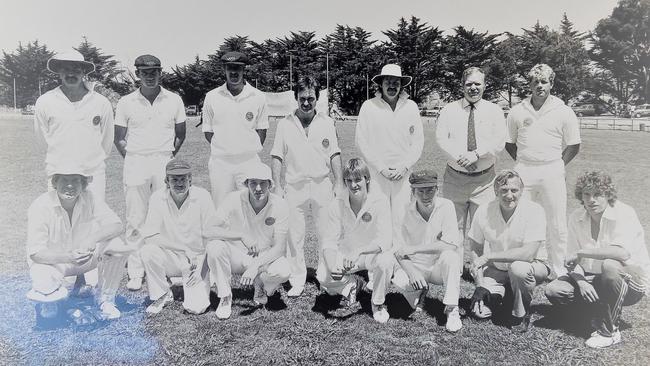
The game was part of a mini-tour of Victoria for the Sri Lankans.
Remarkably, they played six matches in 12 days, starting at Maryborough and finishing at Hastings.
The fixtures sandwiched Sri Lanka’s final match of that summer’s World Series Cup – the West Indies also met Australia in the tri-series – and its first game of the World Championship of Cricket, which was organised for Victoria’s 150-year celebrations and included the switching on of the lights at the MCG.
February was a fabulous month for Victorian country cricket: the West Indies and Pakistan also went bush-bashing.
With crammed international cricket calendars, the days of touring teams meeting regional XIs have long passed.
Former Victorian Cricket Association secretary Ken Jacobs for one says it’s a great shame.
Jacobs says the appearance of world-class cricketers at rural grounds brought a buzz to people and places, and nurtured the game at its grassroots.
“It will never happen again, unfortunately,’’ he says.
“It was terrific for country cricket to get these players out there and I think the international players enjoyed it. They certainly got looked after. It was a big thing for the country cities to have them as guests.’’
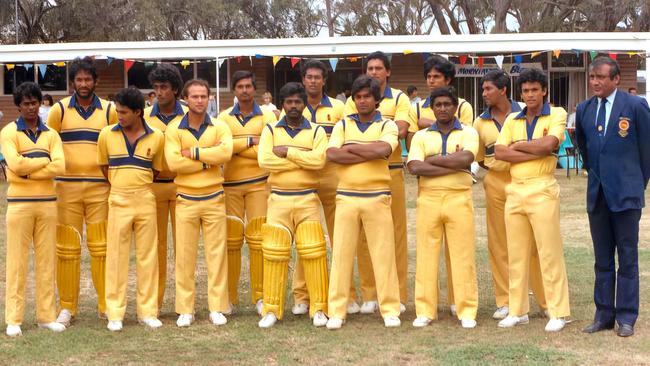
Former Gippsland chairman George Munro also laments the phasing out of the tour matches.
Munro was Baldry’s vice-captain in the match at Morwell and remembers how the local schools closed for the day to allow youngsters to go to the cricket.
Munro says the wicket had a “little bit of juice in it’’. Mendis lost the toss but told a bemused Baldry: “You’ll bat.’’
“What normally happened in those games was the touring side would bat first because they would make the runs and everyone would get to see all their batsmen,’’ Munro says.
“They tried to call the game off after they passed us. But the organisers said, ‘Nah, nah, nah, you’ve got to keep playing’.’’
Munro made 12 and shared a partnership of 50 with top-scorer Murray Frew (33), from the Bairnsdale association.
Munro left the match with a sore thumb after a Ratnayake lifter pinned him on the gloves, and also the regret of not playing against leading Sri Lankan player Roy Dias, who withdrew from the country games because of a death in the family.
“He was one of the big drawcards. Him missing was a real bummer for everyone, because he was a star. He was their best bat by a mile,’’ he says.
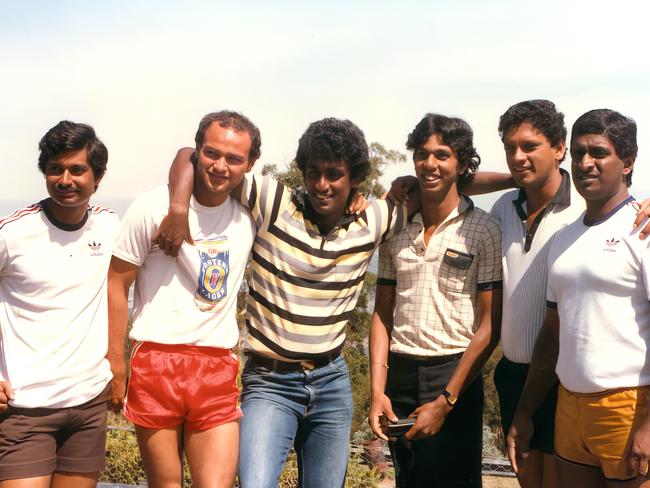
Mark Ridgway also turned out for the Gippsland team, as a batsman. He went on to play good first-class cricket for Tasmania, as a bowler.
Russell White, the father of international Cameron, was another selection.
Baldry – who played 27 Sheffield Shield matches for Victoria – says it was an honour for the players to represent their regions and challenge themselves against big cricketers.
“All changed, sadly,’’ he says. “Back then the touring teams played against the various states and also went to the country. Now they come out, play their three Tests, a couple of T20s and they’re gone.’’
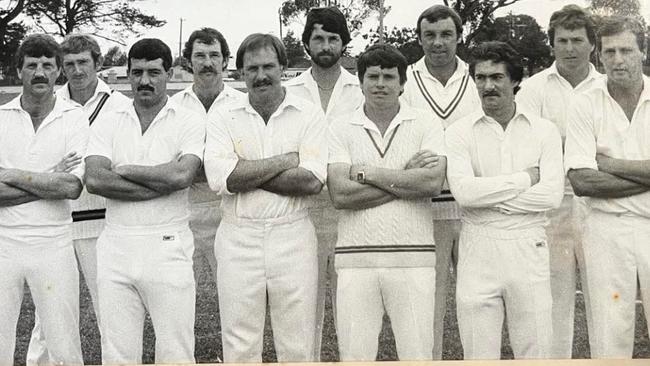
The Gippsland region was Zone 10.
South Gippsland was Zone 11 and its representative team hosted the Sri Lankans at Leongatha on February 12, two days before Morwell.
Champion batsman Ian Eddy, from Foster, captained South Gippsland and scored 51. David Tessari, a wicketkeeper-batsman from Wonthaggi, hit 46 and the locals reached 203.
At one stage they had the visitors 5-76, but Mendis (62no) and Amal Silva (49no) guided the Sri Lankans home, six wickets down and with five overs to spare.
“Hey, we had a good match with them,’’ Eddy says.
“We had them on the ropes a little bit, you know. We had a sniff. They were great to play against.’’
The appearance of the Sri Lankans was a continuance of touring teams playing at the ‘Gatha. It hosted England against a Victorian Country XI in 1978 and New Zealand Emerging Players in 1983. The West Indies, with Curtly Ambrose opening the bowling and Desmond Haynes the batting, came a decade later. Eddy played in all of those fixtures, as well as at Traralgon against New Zealand in 1980.
“Country cricket misses out now,’’ he says. “The high-end is really good but grassroots, which is what cricket is all about, gets overlooked and it lacks a bit. These games were very important. You’re talking about Sri Lanka, we had 4000 people there that day. They pulled up cattle trucks and put these big white sheets over them for sight screens.’’
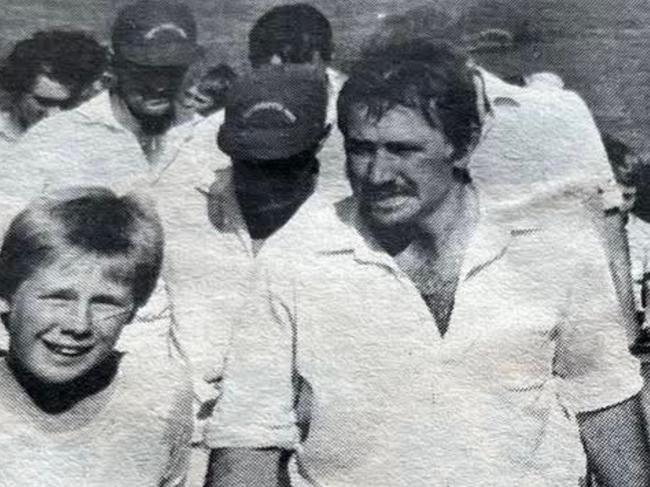
From Leongatha, the Sri Lankans headed to Hastings to meet Mornington Peninsula (Zone 12) for their final match.
They blitzed their highest total of the mini-tour, 9-327, with Ravi Ratnayeke hitting an even hundred.
The Mornington Peninsula team – which included legendary Mornington Peninsula batsman Robbie Bedford and off-spinner Brian McCue – fell for 177.
No. 3 John Hille top scored with 32 and was the first of Marlon von Haght’s four wickets.
Hille, 63 and still playing in the lower grades for Heatherhill, says the visitors were in another class to the locals.
The match attracted “heaps of people, like thousands’’, he says.
“We were happy to be playing against guys of that calibre. They were a pretty handy side,’’ Hille says.
“We thought we were all pretty competent local cricketers and then you see these blokes … gee whiz, it was a fair step-up. The likes of Robbie Bedford would have stepped into that if they had the time and commitment to be full-time cricketers too. At that team Sri Lankans was new into the Test arena and making every post a winner and the talent on show was fabulous. I just enjoyed playing them and watching them, because they were great. They were terrific blokes too.’’
He adds: “Imagine Test players playing in country games now. They just wouldn’t be doing it.’’
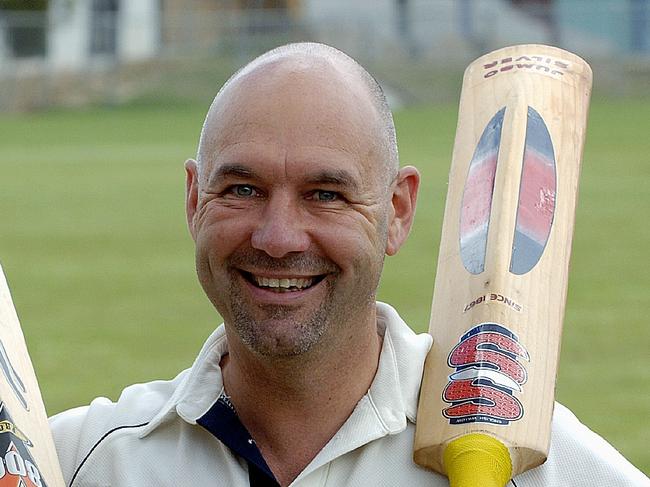
Hille was part of a Victorian Country team that played Sri Lanka at Hastings in 1989 – and had a boilover win over the tourists.
Ed Parker was the assistant secretary of the Victorian Country Cricket League and in 1985 travelled with the Sri Lankans as a liaison officer.
“You travel with them, you point out things to them, you satisfy their requests, you ask them what they want for breakfast,’’ Parker says of his chaperoning role.
“We had an Ansett coach and stayed in motels.’’
He says the players “understood they weren’t playing for sheep stations’’ but, ahead of their World Championship of Cricket campaign, took the matches seriously.
They won them all. “That’s what you’d expect when you have an international side playing against a local district side,’’ Parker notes.
A young Aravinda De Silva hurt his leg earlier in the tour and was on crutches when he joined his teammates ahead of their visit to Hastings. He struck Parker as a fine young man, an impression confirmed in his later dealings with him.
Parker has a warm memory of a little girl approaching Rumesh Ratnayake at Leongatha and telling him he had a dirty face. The cricketer reached forward, gently patted her on the head and replied: “And you my dear have a pretty face.’’
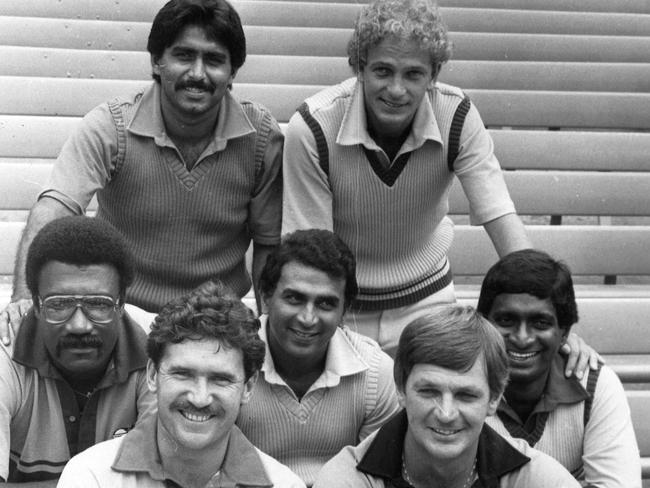
Parker formed a high regard of Sri Lankan cricket.
When Australia hosted the World Cup in 1992, he served as Sri Lankan’s local manager. He understood he had a choice of countries, “but I chose them because they were so nice’’.
February of 1985 also took the West Indies and Pakistan to Victorian regional centres.
Pakistan met Corangamite (Zone 4) at Colac on February 27 in a 30-over affair.
Three days earlier, the tourists had defeated Australia at the MCG in the World Championship of Cricket, with Wasim Akram player of the match.
The paceman did not play against Corangamite, which did have to face Wasim Raja.
Javed Miandad captained Pakistan but was not required to bat.
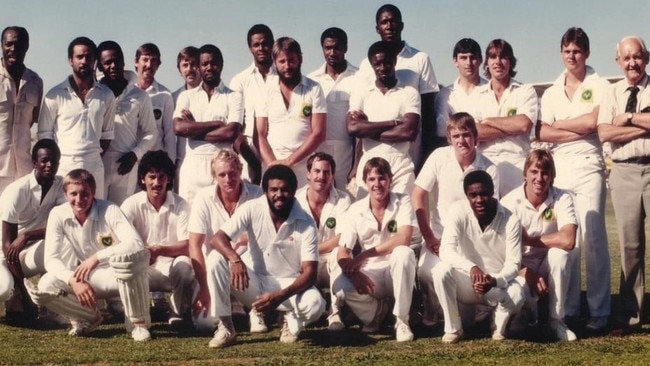
The West Indians played the North East (Zone 8) at Wangaratta on February 24 and met strong opposition from the locals, who dismissed them for 291 and hit 4-274 in reply.
Gavin Rixon scored 74 not and former league footballer Peter Tossol 69 not out, putting on an unbroken 121 for North East.
Greg Hoysted opening the innings with Francis O’Brien and made 44.
He remembers the first delivery of the dig, when Winston Davis ran in, completed his action but did not let the ball go.
Hoysted picked his bat up, but saw nothing coming at him.
“I just about had a heart attack on the spot in front of 10,000 people!’’ he says. “It was a fairly interesting start to the game.’’
Courtney Walsh opened the bowling from the other end. Hoysted had never worn a helmet and thought there was no point in starting, even if he was facing the Caribbean quicks.
Walsh, he says, took it as an insult.
“He spent the entire opening spell hitting me … in the shoulder, in the ribs and everywhere else,’’ Hoysted says. “He pitched one ball up.’’
It hit Hoysted on the pad, giving him a bruise on the left shin.
“I basically ended up bruised from the point of the left shoulder down through the ribs all the way down to the leg,’’ he says.
Later in the innings, the crowd began chanting for Joel Garner to bowl.
He came on and decided to send down off-spin. Hoysted was on 44 and sensed the chance to bring up his half-century by hitting Garner for six. He ran down the wicket, missed the ball and was stumped by Jeff Dujon.
Hoysted wonders if he was the only batsman in the world who was dismissed stumped Dujon, bowled Garner.
The night before the match, the locals had got to know the West Indies players over a barbecue. Desmond Haynes enjoyed the hospitality. The next day he was out for a duck, bowled by top country fast bowler Gary Lidgerwood, who took four wickets with his outswing and low-arm action.
“I think Desmond was very second-hand,’’ Hoysted, now an Australian Over 60s representative player, says. “He might have been saying two or three balls.’’
Tossol wore a stinging blow to the hand off the bowling of Walsh but batted on.
“I had these thin bloody sausage gloves. They were only little. I went to fend one off my head,’’ he told CODE sports last year. He went to a doctor the following day and found the hand was broken.
His legend as a bush cricketer grew in a memorable month when Victoria’s leading regional players took on some of the world’s best cricketers.

FAB FEB
February 6: Sri Lanka 8-313 def Central Highlands (Zone 5) 205 (P Brady 79, G Sanders 33) at Princes Park, Maryborough
February 8: Sri Lanka 8-279 def Goulburn Murray (Zone 7) 179 (J Hill 50) at Deakin Reserve, Shepparton
February 10: Sri Lanka 253 def Upper Goulburn (Zone 9) 175 (R Ingwerson 48no) at Yea
February 12: Sri Lanka 6-204 def South Gippsland (Zone 11) 201 (I Eddy 51, D Tessari 46, R Cleeland 21) at Leongatha.
February 14: Sri Lanka 7-238 def Gippsland (Zone 10) 100 (M Frew 33) at Morwell.
February 24: West Indies 291 def North East (Zone 8) 274 (G Rixon 74no, P Tossol 69no) at Wangaratta Showground
February 27: Pakistan 4-100 def Corangamite (Zone 4) 5-94 at Central Reserve, Colac
More Coverage
Originally published as Fab Feb: When the world’s best cricketers headed to country Victoria




